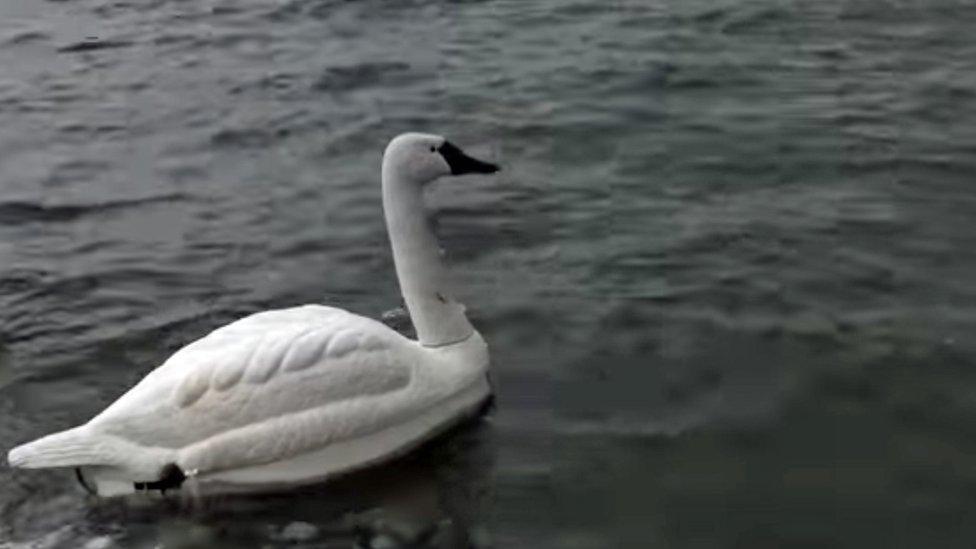Singapore recruits swanbots to test water quality
- Published

One of the robot swans: You can hardly tell them apart from the real thing
Robot swans are taking to the waters of Singapore in order to test the quality of its reservoirs' drinking water, it's reported.
According to Channel News Asia, , externalfive fake birds are being set loose on reservoirs serving the city state to monitor water quality as part of the aptly named SWAN project (Smart Water Assessment Network).
They've been designed to look like real swans so that they'll blend in with their surroundings, the news website says. While gracefully drifting along on the surface, underneath is a system of propellers and water sampling equipment, and they use wireless technology to send real-time results to national water agency PUB.
Professor Mandar Chitre of the National University of Singapore, part of a team that designed the swanbots, told CNA, external: "We started with a number of smaller bird models, before we decided on the swan. It's just the right size.
"If you look at it in the environment, it looks just like a swan swimming around."
According to the robots' developers, the swans are sturdy enough to survive encounters with kayaks and small boats. But their main advantage is that the PUB will no longer have to send its scientists out in a boat to collect water samples manually.
The robots have been designed to be as autonomous as possible, and to cover wide expanses of water without human intervention. However, researchers say they can also control the fake swans by remote control, should they need to call their mechanical charges over for updates or repairs.

The robots are less than swan-like under the water
Reporting by Alistair Coleman
Next story: Bored Russian man crashes armoured vehicle into a shop
Use #NewsfromElsewhere to stay up-to-date with our reports via Twitter, external.